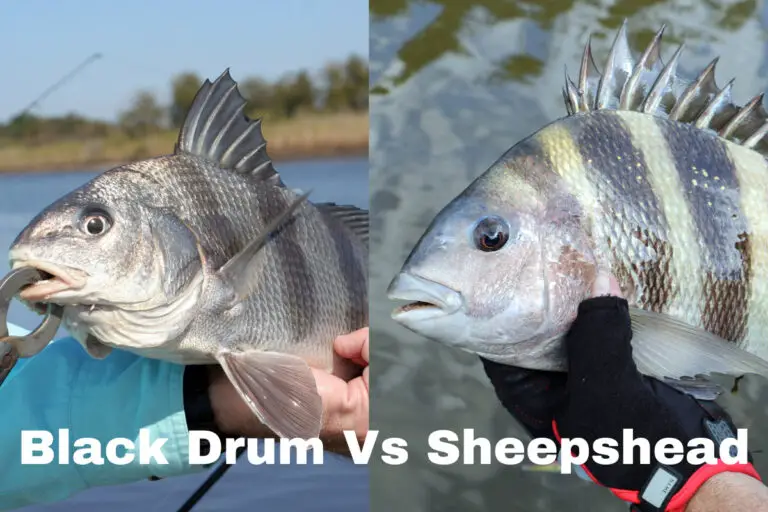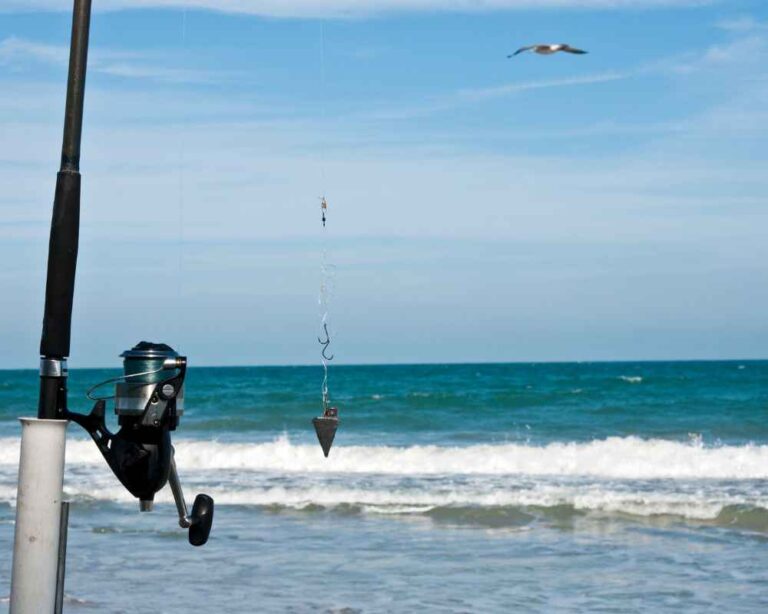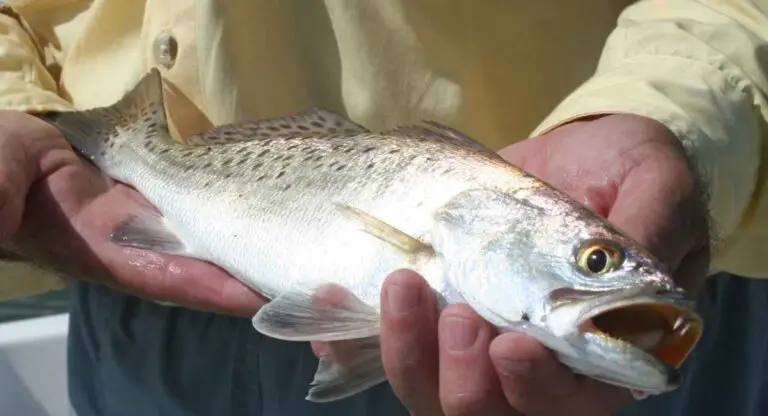How to Fish the Surf in Texas: Guide to Catching Big Fishes on the Texas Coastline
Estimated reading time: 10 minutes
Hey there, fishing enthusiasts! Are you ready for a little adventure? Well, I’ve got just the thing for you. We’re going to be talking about how to fish the surf in Texas today! And let me tell you, it’s not your average fishing trip. The waves are bigger than usual and sometimes unpredictable. But don’t worry; with some top-notch tips and tricks, we’ll make sure that even beginners can catch those big ones!
So sit tight as I walk you through everything from the type of bait that works best (hint: it’s not what you think) to where is best onshore or offshore positions (depending on what secondarykeywords) during this experience.
Are You Excited Already?
Fishing is more than just a hobby; it’s personally my escape from reality – an opportunity to appreciate nature while honing my skills at something I love doing. That feeling of anticipation when casting your line under perfect conditions makes coming home with a fresh catch all worthwhile.
The surf-fishing experience adds another level of excitement – one that brings its unique charm despite being quite challenging compared to other kinds of fishing techniques out there – but trust me when I say, if done correctly (and safely), then boy oh boy…you’ll have yourself one heckuva time.
So grab some coffee – or beverage alcohol permitting depending on age- and read along as we take our first dive into walking these waters like pros.
Introduction
Let me just start off by saying that I absolutely love fishing. It’s been a passion of mine ever since I can remember. So, when I had the opportunity to write about surf fishing in Texas, I jumped at the chance.
The Texas coastline has some of the finest beaches for fishing in America, and catching big fishes on these beaches is an experience unlike any other.
In this comprehensive guide, we will delve into everything you need to know about surf fishing in Texas. From gear selection to bait choice and techniques – we’ll cover it all. Whether you’re a seasoned angler or just starting out on your journey to catch big fish along the Gulf Coast, this guide is for you.
What Makes Surf Fishing In Texas Different Than Other Gulf States?
Fishing on Texas beaches presents some unique features and challenges that set it apart from other coastal areas:
- Variable surf conditions: Texas beaches can experience rapidly changing surf conditions due to weather patterns like cold fronts, making it essential for anglers to adapt their techniques and gear.
- Strong currents: The presence of rip currents and the longshore current along Texas beaches can make surf fishing tricky, requiring extra caution and attention to water movement.
- Seaweed: Texas beaches, especially during the summer, can accumulate large amounts of Sargassum seaweed, which can make casting and retrieving lines difficult and snag-prone.
- Shallow waters: Many Texas beaches have shallow and gradually sloping shorelines, meaning anglers may need to wade out further or use longer casts to reach deeper waters where fish are feeding.
- Beachgoers: Texas beaches can be popular tourist destinations, particularly during peak season, which may lead to crowded conditions, making it harder to find a good spot for surf fishing without disturbing other beach users.
Despite these challenges, Texas beaches offer unique and exciting surf fishing opportunities, and anglers willing to adapt to the conditions can experience great success.
Identifying The Best Locations For Surf Fishing In Texas
Texas has some incredible surf fishing spots along its extensive coastline. Here are a few of the best locations to cast your line and reel in some amazing catches:
- Padre Island National Seashore: This pristine stretch of coastline offers miles of untouched beach, making it an ideal spot for surf fishing. You can target redfish, speckled trout, and even sharks.
- Galveston Island: With multiple beaches and fishing piers, Galveston offers great surf fishing opportunities. Popular spots include Galveston Island State Park and the Galveston Fishing Pier.
- Mustang Island: Located near Corpus Christi, Mustang Island offers fantastic surf fishing for redfish, speckled trout, and flounder. Check out Mustang Island State Park for some prime fishing spots.
- South Padre Island: Known for its beautiful beaches and crystal-clear waters, South Padre Island is an excellent surf fishing destination. You can find redfish, speckled trout, and snook here.
- Matagorda Bay: Matagorda Bay boasts some of the best surf fishing along the Texas Gulf Coast. Head to Matagorda Peninsula or Matagorda Island for a shot at redfish, flounder, and speckled trout.
- Bolivar Peninsula: Located near Galveston, Bolivar Peninsula offers great surf fishing opportunities for anglers targeting redfish, flounder, and speckled trout.
- Port Aransas: As a popular beach town, Port Aransas offers numerous surf fishing opportunities. Fish near jetties, piers, or along the beach for a variety of species.
Remember that conditions can change, and the success of your surf fishing trip will depend on factors like weather, tides, and the time of year. Be prepared to adapt your strategy and explore different locations to find the best fishing spots in Texas.
Understanding The Best Time Of Year To Fish The Surf In Texas
To increase chances for many of your preferred breeds, keen “surf-casters” prefer fishing during hot summer months on the Gulf of Mexico when southern winds carry green water onto shorelines.
Typically, it’s been I’ve seen that surf fishermen are more likely to catch saltwater fishes like flounders, speckled trout, and red drum during these times.
The Role Of Tide And Wind When Surf Fishing
Tide patterns have a significant impact on fishing success when trying to catch larger saltwater fishes on the TX Gulf Coast.
Depending on tidal direction (rising, falling), some structures’ positions will have higher concentrations of prey offering ideal venues for trophy catches!
Conditions like offshore winds, surf swells and changing weather fronts can also affect how active fish are which should be noted closely before venturing out into waters.
The Importance Of Structure When Fishing The Surf
Predators tend to congregate around structures in the waters such as piers, jetties, and sunken obstructions along shorelines and beaches. These structures offer shade, protection and hiding spots depending on their size and the prey and hunting style and habitat preference.
Identifying the perfect spot requires observation skills, so look around for factors like water depth and current velocity, disturbances or distinct color changes caused by various undersea flora and fauna like algae patches, sandbars, rock formations and clumps of seaweed.
Once you’ve located such an area place yourself where eddies occur near one side of structure allowing lure and bait flow through shelter offered catching more fishes probable.
Ready to become a surf fishing pro? Check out this Salt Strong video to learn the secrets of reading the beach like a seasoned angler!
Timing Your Fishing Trip: The Best Times Of Day To Catch Fish On The Texas Coastline
As a general rule, the prime time for fishing the surf is at sunrise or sunset. During these times, fish tend to be more active and feed aggressively.
An incoming tide is typically better as well since it brings in fresher water filled with nutrients that attract baitfish and predators alike.
However, it’s also important to keep track of wind and current conditions which can influence fish movements.
Choosing The Right Gear For Surf Fishing
Picking up suitable gear helps increase chances of successfully catching various fishes available along TX coastal line such as speckled trout, flounders, Texas Redfish and Sharks.
Keeping this in mind, always pack light gears while going tidal wave hunting upon shores such as: heavy-duty spinning reel loaded with braided or monofilament line. Carry an extra spool for quick changeover if needed. A good quality rod measuring at least 7ft having sufficient backbone power and ultra-sensitive tip-section capable enough detect even slightest nibble, bite or pull.
Pack a tackle box full of assorted lures, hook sizes, swivels, beads, weights and rigs depending upon your targeted species. And remember to bring a sturdy fishing cooler to preserve the caught fish in until return trip.
New to surf fishing in Texas? Check out this awesome video from Hey Skipper, packed with beginner tips to help you catch big fish and more!
Preparing for a Surf Fishing Trip in Texas
Before heading out for a day of surf fishing along the Gulf Coastline, it’s essential to make sure that you’re well-prepared with all necessary items like sunscreen, hat, cap, and sunglasses to protect from harmful UV rays.
Remember to bring insect repellent. Mosquitoes abound especially during summer months, drinking water, snacks and other food items to keep you going throughout the day.
These are all critical things that can have a significant impact on how much enjoyable your trip turns out to be.
Bait Selection For Catching Different Types Of Fish On The Texas Coastline
Mostly used bait for catching smaller sized fishes include shrimps and fishbits while larger baits such as crabs, cut mullets and whiting being favorites among anglers seeking bigger fish varieties.
So be sure you carry all required live and frozen baits before heading out into waters aiming towards covering wider spectrum of catches possible by using different bait types per situation encountered.
Check out the following resources on saltwater baits and lures:
- Top 7 Best Live Bait For Redfish: An Ultimate Guide
- The Best Lures for Redfish Fishing: Top 5 Picks for Beginners
- Redfish Surf Fishing Rigs: Tips and Techniques for Successful Fishing
Techniques And Strategies For Catching Big Fishes
Surfcasting requires patience and skillset sharpened over time as one learns how different tides, currents and conditions affect fish behaviors.
Some commonly used techniques while fishing the surf include bottom-fishing, casting onto structure nearby (e.g., submerged rocks, reef edges, etc.) or along tidal channels.
Use a popping cork to generate sound waves that attract attention of predators in vicinity. Use the technique “walking-the-dog” by slowly reeling in poppers or fly baits intermittently to imitate natural prey movements; reverse drop-shotting or suspending baits above the bottom etc.
Artificial Lures Vs Live Bait: Pros And Cons For Surf Fishing
Anglers use either artificial lures or live bait while casting rods along coastline beaches and shorelines because often one works better than other depending upon species preferences, time of day and weather factors.
Live baits such as shrimp, crabs, mullets bring variations, allure, actions that imitate actual living food sources appealing more naturally stimulating corresponding reflexes thus attracting variety of fish species usually at higher rates but need frequent replenishing due perishable nature.
Where artificial lures simulate natural movements and behaviors realistically providing wider range and color options unperishable convenient where switching baits quickly per situation arises without any worries making them an ideal choice when targeting certain breeds specific needs.
Fishing For Sharks: Tips And Tricks For Experienced Anglers
Shark fishing can be a thrilling experience for experienced anglers. However, it’s important to keep safety precautions in mind as sharks are dangerous creatures with razor-sharp teeth and powerful jaws.
Always use heavy duty tackle with steel leaders and monofilament lines at least 150 lbs test strength. Rig up dead or fresh bait varieties like mackerel, bonito, shrimp, cuttlefish heads. Use circle hooks and J-hooks with Dropshot rigs or Paternoster rigs.
Pump shadow-casts into seabed ensuring its rhythm and motion attracting their interest giving adequate time before luring them out breaking surface towards your bait – use caution when handling these powerful predators!
Conclusion
Surf fishing in Texas offers an experience unlike any other – from catching huge fishes such as sharks, redfishes ,speckled trout and flounders along shorelines to taking in breathtaking sunrises and sunsets over the Gulf of Mexico. Remember to follow safety precautions while fishing for sharks and be mindful of structures in the waters that can attract fish.
With this guide, you now have all the information you need to prepare for a successful surf fishing trip on the Texas Coastline. Whether using live bait or artificial lures, picking up suitable gear or choosing best possible beach and shore access points – everything covered here will help increase odds towards returning home with an impressive catch from coastal waters!







